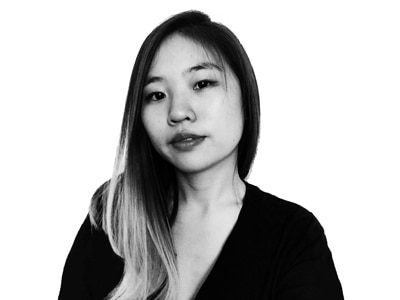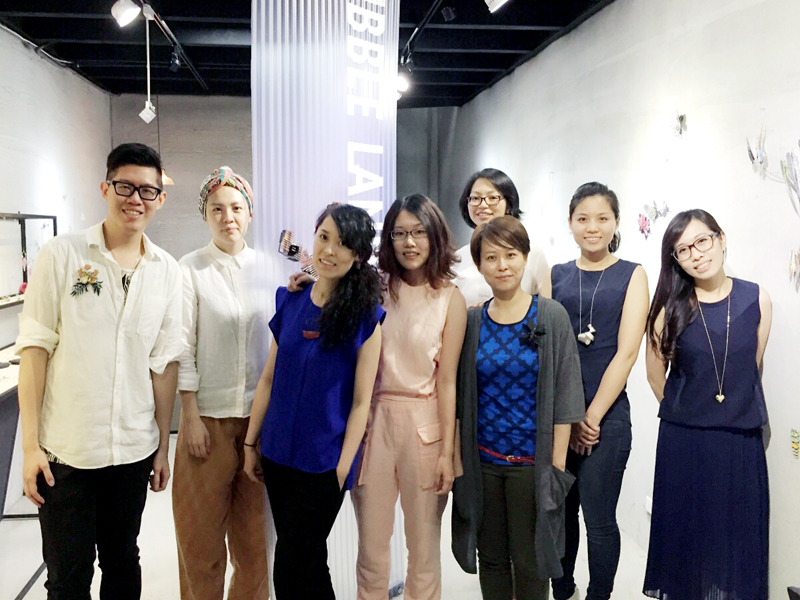
886 Bench is a collective of 10 emerging jewelry artists from Taiwan, a subtropical island known for its semiconductor chips and complicated relationship with China. The group has exhibited at Schmuck Jewellery Week, JOYA Barcelona Art Jewellery Fair, and Sieraad International Jewellery Art Fair. Its members have won international accolades and will now be bringing their exhibition to Galerie Noel Guyomarc’h. Here, we speak with half of them: Heng Lee, Shih-Dea Tseng, Yu-Ping Lin (Rainey), Wen-Miao Yeh, and Cai-Xuan Wu (Molly).
Olivia Shih: Why, how, and when did this collective come into existence?
Heng Lee: The name “Bench 886” comes from elements in our background. The bench is the workplace where jewelers feel most confident, while “886” is the international dialing code of Taiwan, the land that feeds into our aesthetics. Through Bench 886, we hope to connect with the world through our work.
Bench 886 consists of 10 jewelers from Taiwan. Each jeweler usually works independently, but in 2013, we decided to collaborate and form an artist collective. In 2014, we made our official debut with a group exhibition titled Ni Hao (“hello” in Mandarin) as an ice-breaking introduction to the Schmuck Jewellery Week. Positive response and encouragement from the public led us to present Bubble Land, a themed exhibition, in 2015.
This collective has shown as a group in Germany, Taiwan, and now Canada. How does the collective reconcile 10 distinct aesthetics and materials when curating each show? Has your exhibition strategy evolved over time to address this challenge?
Heng Lee: I think contemporary jewelry in Taiwan is very diverse and multifaceted, which also happens to be the essence of our group. Our first exhibition, Ni Hao, in Munich, was an introductory “hello” showcasing work from East Asia, and this gave rise to curiosity and fascination about our homeland. The positive reception prompted us to focus on a more centralized concept for our second exhibition, Bubble Land. The title reflects the state of the solitary, working individual but also the inseparable existence of an individual within a community or a nation. It is a reflection of the present situation of the land we live in.
Shih-Dea Tseng, your porcelain vessels function as intimate haptic experiences for the wearer. What inspired your personal and introspective take on ceramic jewelry?
Shih-Dea Tseng: My inspiration comes from my surroundings, subconscious experiences, and the effects of these experiences that I see in myself and reflected in those around me. This collection was built from a sense of frustration at verbal communication and from a need to engage with honesty, sensitivity, and a deeper understanding of our bodies. My main focus is on fairness; my work encourages people to muse about first impressions, interact with the object in hand, and then revise their impressions.

Yu-Ping Lin, your fabric jewelry, which can be folded into itself to reveal a kaleidoscope of colors and patterns, blurs the line between fashion and contemporary jewelry. How do you harmonize the fashion design and art aspects of your work?
Yu-Ping Lin (Rainey): I did not at first set out to be a fashion designer or jewelry artist. As my portfolios develop, I enjoy both elements and aesthetics in my pieces, which drives me to cross the boundary between contemporary jewelry and fashion. I believe they have one important element in common, which is the fact that both are about attitude, beauty, and passion. My work is based on design discipline, inspired by the notion of nature, and is created with a combination of traditional craft skills, such as paper cutting and origami, with new applied techniques like laser cutting, which allow me to venture into fashion scales and art forms. To me, this is a natural process of putting various elements into a melting pot of harmony—a surprising reflection of what we practice in our kaleidoscopic lives.

Heng Lee, your work combines the pixelation of the digital era with the hand-driven tradition of Chinese embroidery. With the complicated relationship between Taiwan and China in mind, how do you view your jewelry as a Taiwanese artist who draws from a localized, inherited Chinese culture?
Heng Lee: In my mind, a part of Taiwanese culture came from China, and it’s a part of us, just like part of England’s traditions are integrated in American culture. I love and appreciate traditional culture and craft from China, and I translate them into my jewelry in a Taiwanese (my own) manner.
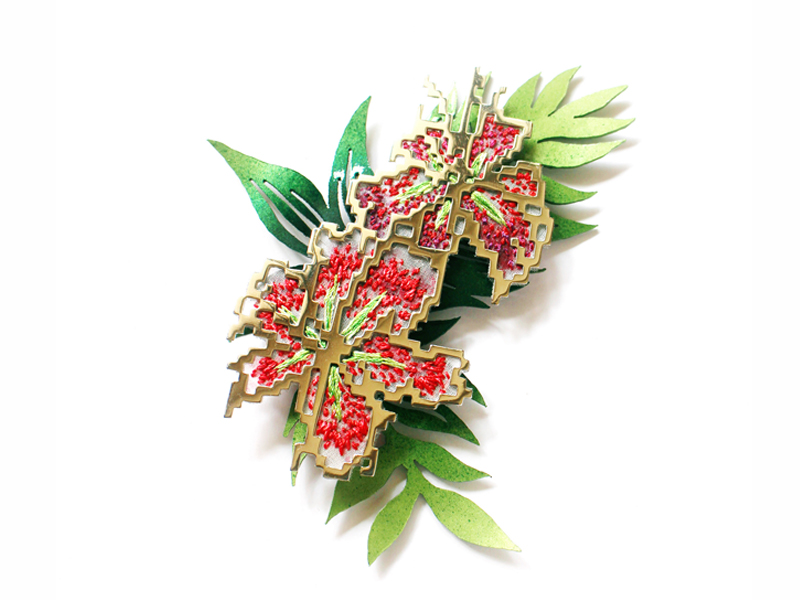
Wen-Miao Yeh, your plastic creations propel the viewer into fantastical worlds of neon pastels and organic origami forms, reminiscent of Venus flytraps. How did you dream up these otherworldly objects?
Wen-Miao Yeh: My inspiration originates from two architectural feats in London: the London Eye and the Millennium Dome. During my time in London, I became acquainted with these two structures and studied interactions between people and the architecture. With these stories in mind, I collected, cropped, and reconfigured images of these structures to create folded and layered objects.
To be honest, I had no idea what my work would look like in the end. During the process of making, I concentrated on the structures and my personal experience, and specific colors and images slowly floated into my mind. Some of the neon pastel colors come from lovely memories of fireworks in London. As for the imagery of Venus flytraps, I’m guessing the forms come from the ever-changing but simultaneously traditional and fresh atmosphere in London, coupled with the viewer’s inner thoughts! I find it interesting that my collection, which was based on a city, can evoke images of plants and greenery.
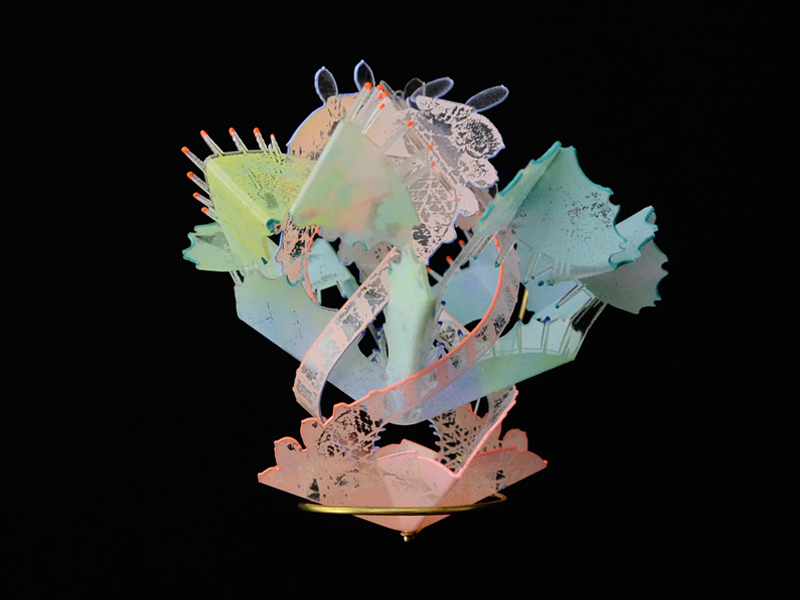
Taiwan’s neighbors, Japan and South Korea, have cultivated contemporary jewelry scenes for longer periods of time. What does Taiwanese contemporary jewelry bring to the conversation in East Asia?
Mei-Fang Chiang: Because of Taiwan’s unique location and historical and political evolution, the Taiwanese are a very flexible and adaptable people. Taiwan has had to find its identity amid the power plays and conflicts of larger and more influential countries, and through hundreds of years of being colonized by various cultures. In this context, creatives must bravely embrace the new, venture out to the edge, and explore all and any mediums to express an amalgamation of cultures. In relation to our neighboring countries, such as China, Japan, South Korea, and others, Taiwanese contemporary jewelry brings a willingness to experiment and shake hands with the unknown.
Could you tell us more about the Taiwanese contemporary jewelry field? What difficulties do you face with the reception of contemporary jewelry in Taiwan? What are the jewelry galleries and collectors in Taiwan like?
Heng Lee: In Taiwan, people tend to wear understated jewelry made from precious metals—especially on special occasions. For events like weddings, the parents typically gift the happy couple with expensive jewelry as a symbol of happiness and luck. Contemporary jewelry, on the other hand, finds its value in the mind and hands of its creator. Contemporary jewelry is imbued with the creator’s distinct thought and aesthetics, transforming jewelry into an object of contemplation. For the average person in East Asia, wearing contemporary jewelry would equal expressing one’s thoughts openly, which would elicit feelings of awkwardness and vulnerability.
As a response, three members of 886 Bench—Ying-Hsun (Zita) Hsu, Ying-Hsiu Chen, and myself—decided in 2015 to launch PIN sstudio, the first and only contemporary metalwork and jewelry platform that combines shop, showroom, and studio. Through curating contemporary jewelry exhibitions and artist workshops, PIN sstudio seeks to share our vision of telling stories by selling unique jewelry from Taiwanese and international jewelry artists. This platform is for both the public and the creatives to share and exchange life experiences.
In the past year, we’ve found that our customers are typically artists with distinct tastes, designers, or simply people who enjoy quality objects in their lives. Our customers are attracted to the stories of the creators behind the jewelry and the uniqueness of what we offer. Although our client base is on the small side, we’re dedicated to making the voice of contemporary jewelry heard.

Recently, contemporary jewelry programs have been springing up in colleges and universities throughout Taiwan. Why the burst of interest in contemporary jewelry, and what types of jewelry do these programs focus on?
Cai-Xuan Wu (Molly): Before 2012, when I traveled to England to study abroad, contemporary jewelry programs in Taiwan were not as advanced and rich as they are now. Personally, I think Taiwan’s affair with contemporary jewelry is on the short side, unlike the long history this field has enjoyed in Europe or even the USA. Many of the Taiwanese professors who teach contemporary jewelry earned their degrees in foreign countries and brought back a more enriched and well-rounded way of thinking about contemporary jewelry. This desire for improvement and expansion of the mind has allowed creatives in Taiwan to communicate with the rest of the world in a global, visual language and express a uniquely Taiwanese perspective, derived from personal and intimate experiences.
Heng Lee: In recent years, cultural and creative industries are on the rise, and with that the public’s interest in a haptic, handmade lifestyle grows. As a result, many studios and colleges now offer taster or beginner courses in the handmade and the crafts. Few, however, offer a complete and structured education in metalsmithing and contemporary jewelry. Beginner courses, ultimately, are for beginners and don’t provide in-depth experiences. The bright side of the increased accessibility, though, is that the average person can now understand the work that goes into each object and the value of the handmade.

As a group, 886 Bench has traveled and exhibited locally and internationally. Outside of the group, each member has also cultivated exciting, individual ventures. Could you talk about these?
Heng Lee: Bench 886 has participated in Schmuck in Munich, Germany; Joya Art Jewellery Fair in Spain; and the Sieraad Art Fair in the Netherlands. Each exhibition allowed us to see the state and aesthetics of each country’s contemporary jewelry field, and we met many artists along the way. Knowing that we share similar experiences and ideals as contemporary jewelry artists was extremely heartening!
Cai-Xuan Wu (Molly): Like many other countries with an emerging contemporary jewelry scene, Taiwan is still in the developing stages, and work conditions for jewelry artists are not ideal. To make a living, I have two part-time jobs; one as an assistant to a Taiwanese brand designer, the other as an apprentice at a fine jewelry studio. The little time I have outside of work is when I can focus on my own jewelry. Although time for creative work is sparse, the change in work environment and learning mindsets is a source of inspiration. Hopefully, these experiences will translate into more vivid and diverse creations in the future.
Taiwan is a very small country, but 886 Bench has brought international and vibrant visibility to Taiwanese contemporary jewelry. What does 886 Bench have planned for us in the near future?
Heng Lee: 2015 has been a year of drastic changes! In March, we had our first themed exhibition, Bubble Land, which was built on hours and hours of planning, creating, promoting, and crowdfunding. In 2015, a few members of 886 Bench became mothers, some members launched their own jewelry labels, and others opened contemporary jewelry platforms. As a result, we will be taking a hiatus in 2016 to recharge. (But we’re still happy to receive exhibition invitations!) Each member of 886 Bench is dedicated to their own work and to the contemporary jewelry scene, and we look forward to bringing our audience more spectacular work!
Thank you.
The works in this exhibition are priced between US$100 and $1,500.
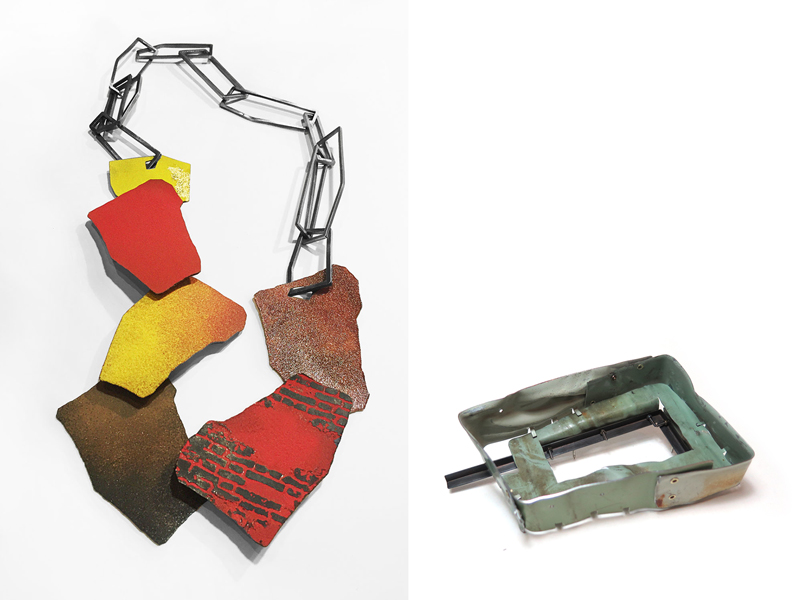
INDEX IMAGE: Ying-Hsiu Chen, Sketch Series, Scenery in My Mind, 2015, brooch, light clay, bath towel, brass plated with 18-karat gold, brass plated with rhodium, 65 x 50 x 30 mm, photo: artist
